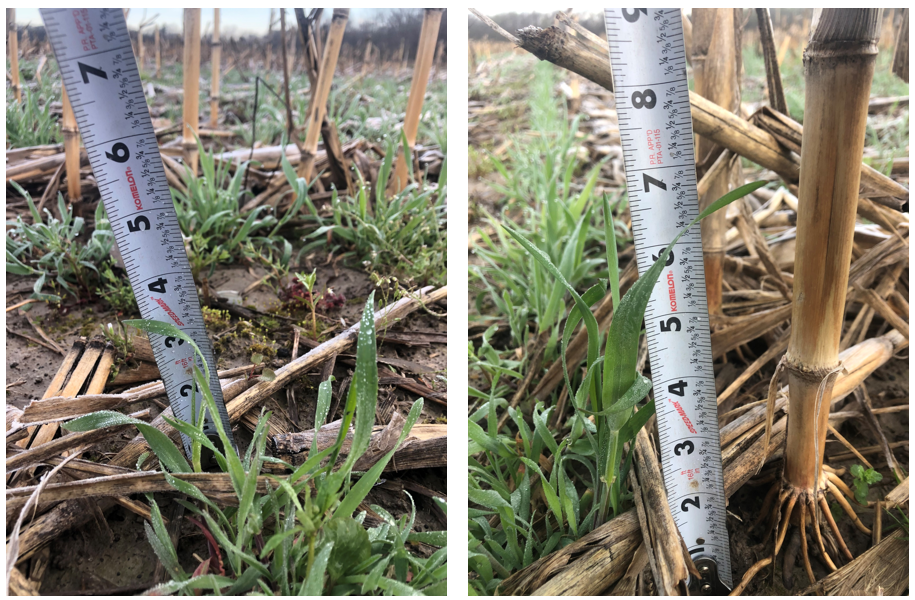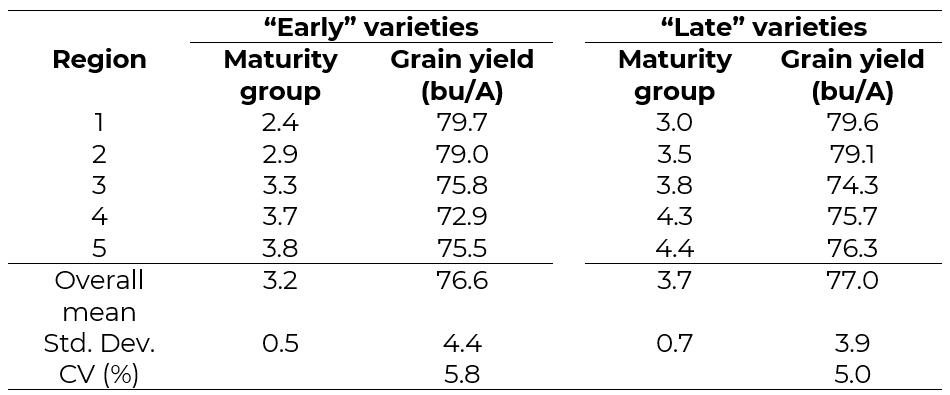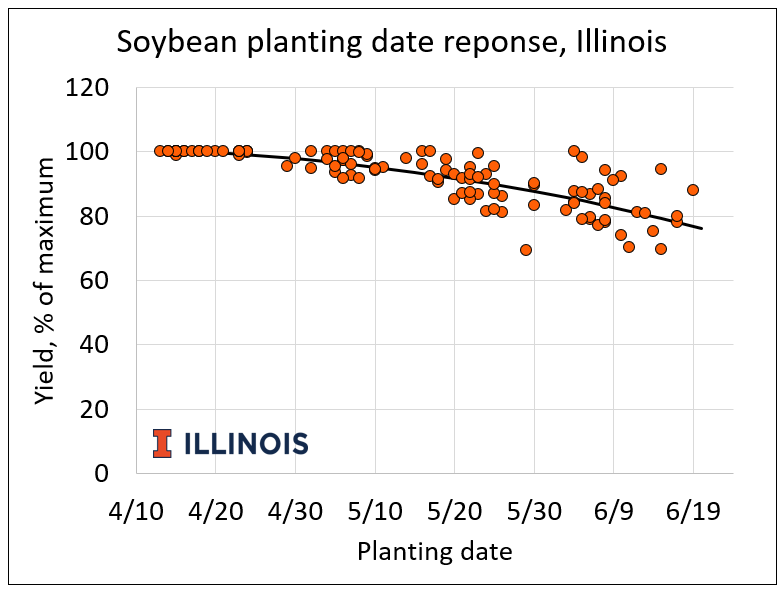Early-Season Soybean Management in 2023
March was a wet month across much of Illinois. Statewide precipitation averaged 4.48 inches, 1.27 inches above normal. The wet trend continued throughout the first week of April, especially in northern Illinois: more than 1.5 inches of rain fell in some places. NASS reported 1.7 and 2.5 days suitable for fieldwork for the weeks ending April 2 and April 9, respectively.
March temperature averaged 40.5 degrees compared to the 30-yr average of 41.1 degrees, but with wild swings. Temperatures were 3 to 8 degrees above normal early in the month, dropped considerably in mid-March (4 to 10 degrees below normal), and remained below average till the end of March and the first week of April. The forecast is for warm and dry weather in the next few weeks, bringing optimism for better conditions for fieldwork before too long.
Cover crop management
Due to the cold weather in the past couple of weeks, cereal rye has grown much less than normal, especially in those fields planted between late October and early November. Figure 1 shows cereal rye stands in an on-farm trial near Effingham, Illinois, on April 7, funded by the Illinois Soybean Association. The rye was planted into corn stalks using 40-45 pounds per acre of seed on October 13, 2022. Most of the rye in the field is about 4 inches tall, with a few patches 6-7 inches tall. But cereal rye is a cool-season crop, and it will grow rapidly with warmer temperatures this week. We want enough growth to produce the agroecosystem benefits for which we planted the cover crop, but we also need to manage it so it doesn’t interfere with soybean establishment. The current recommendation is to terminate the cereal rye when plants are 6 to 18 inches tall or about two weeks before planting soybean – whichever comes first. This wide range gives us some flexibility, and if the dry weather sticks to at least the third week of April, terminating the cereal rye should not be a problem. Many growers can successfully plant soybean into terminated cereal rye taller than 18 inches, mainly if weed control is a primary purpose, but new cover crop users should terminate when the cereal rye is smaller.

Variety selection and maturity
Most people have already selected their varieties for 2023. While seed companies remain the primary source of information about the varieties they commercialize, the University of Illinois Variety Testing trials provides neutral, third-party information on current public and private varieties as well as comparisons that might not be available from other sources. Entries at each location are separated in roughly equal numbers into two sets: one with shorter- and one with longer-maturity varieties. Averaged across 5 regions and 13 sites in 2022, the “early” and “late” varieties averaged 76.6 and 77.0 bushels per acre, respectively (Table 1). Results from 2022 indicate that maturity was not consistently related with grain yield, and that most varieties within 0.5 units on either side of the “optimum” produce similar yields. Within that range, a mixture of earlier and later varieties can help spread harvest some without much effect on grain yield.

Planting date
There is no question that timely planting is a critical management practice for optimizing yields. Key yield benefits of planting soybean early are the potential to produce more nodes on the main stem, and early canopy closure that enables more light interception to drive photosynthesis. In recent years, however, there has been many discussions on whether soybeans should be planted before corn, sometimes as early as March if possible.
Figure 2 summarizes the results of 28 planting date trials conducted in central and northern Illinois. Target planting dates were in mid-April and then about every two weeks to mid-June; each trial included four planting dates. Planting between the second week of April and the end of April maximized yields, and yields declined slowly with planting first half of May, reaching about 94% of the maximum by May 15. Yield loss then accelerated, with yield reaching nearly 87% of maximum by May 31 and 79% of maximum by June 15. While we did not plant before April 10 in any of these trials, the fact that yields were no higher from planting on April 15 than on April 30 shows that the “early planting” advantage is generally maximized if planting can be done by the end of April.

Should we start planting soybean or corn first?
If, as forecast, weather moving through mid-April continues to be relatively warm and dry, it makes little difference which crop gets planted first—the decision can simply be based on which fields are ready first. If it stays warm without heavy rainfall after planting, both crops will get off to a good start and benefit equally. Prolonged cool temperatures following very early planting of both corn and soybeans can limit yield potential, although this is rare. If the forecast changes to cooler and wetter, neither crop will have much advantage: corn emerges a little better than soybeans under such conditions, but this is offset by the need to have a higher percentage of corn seeds emerge. As shown here and in the previous article, the “optimum” planting window for both crops runs from mid- to late-April, based on trials done across years and sites. But statewide, planting early does not guarantee high yields, and planting in mid-May (as happened in 2022) doesn’t always mean lower yields. Planting date has less influence on yields than the weather—mostly rainfall—during the warm months of the growing season.
The Illinois Crop Progress report, released today (April 10), shows that 1% of Illinois corn was planted yesterday, even with the 5-yr average.
Seeding rate
While 100,000 or even fewer plants per acre will maximize yield in many cases, our research shows that this is not always enough plants. Trying to minimize the seeding rate can end up costing yield and profit, especially in those cases when emergence and stand establishment are lowered by conditions at or after planting. While responses to plant stand do vary across trials, we have found that 115,000 to 120,000 plants (not seeds) per acre at harvest are often needed to produce the highest dollar return on the seed investment. If we plant good seeds into good conditions, we can expect 85% stand establishment, in which case we should plant about 140,000 seeds per acre, which for most seed companies today is one unit of seed. We can tinker with that based on conditions at planting: lowering it by maybe 10 or 15 thousand if conditions and forecast are both favorable, expecting about 90% stand establishment. If the forecast is for heavy rainfall after planting, raising the seeding rate in anticipation of more stand loss may not be as effective as waiting to plant until the threat of heavy rainfall is passed.





